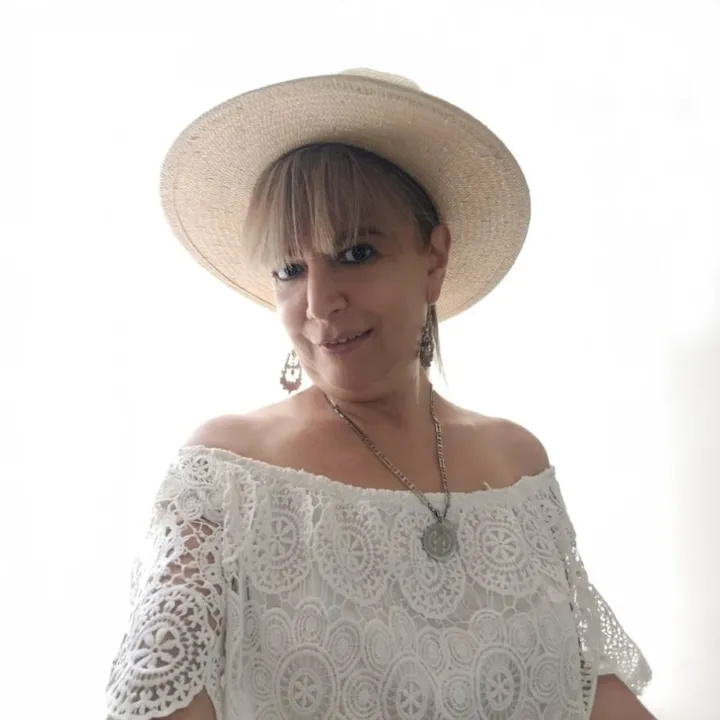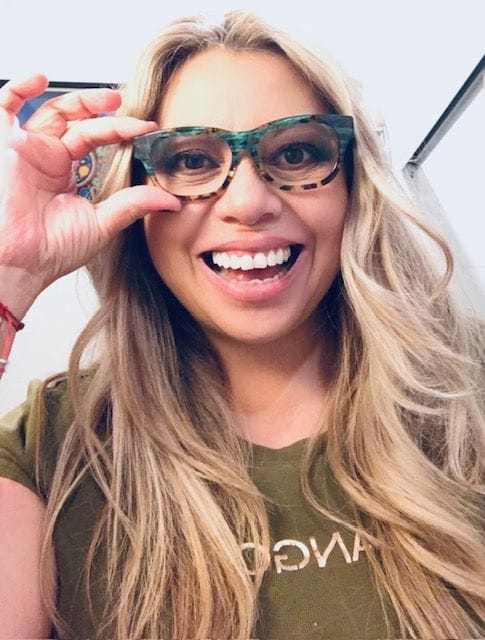Por Anel Arellano Tejeda

Otra vez nos saludamos en octubre, el mes rosa. El año pasado nos conocimos hablando de los 10 puntos imperdibles que debes de conocer como mujer al respecto del cáncer de mama, no para asustarte o preocuparte, sino para empoderarte de la manera más efectiva que existe, con información misma que solo sirve si nos dedicamos a compartirla, especialmente con esas mujeres de nuestra vida que ya sea permanentes o transitorias, tenemos la oportunidad de compartir tiempo y conversaciones, esos momentos de cercanía social que nos caracterizan y remontan pre históricamente a los tiempos cuando nos sentábamos alrededor del fuego en las cavernas, a cuidar en comunidad de las crías y los víveres. Esos datos que platicamos entre nosotras pueden representar un cambio sustancial en la vida de la interlocutora, además de que, en mi actividad como profesora existe en la academia una premisa que escribió el ensayista francés Joseph Joubert, que reza: “Enseñar es aprender dos veces” así que los datos que compartes continuamente, difícilmente los vas a olvidar.
Este año, en el mes de septiembre, en un congreso de especialistas en la atención integral y multidisciplinaria de cáncer de mama de las principales instituciones de salud del país, me llamó la atención que se mencionó lo molesto que les parecía que en el mes de octubre “todo fuera rosa”. Yo asumo que se referían a lo oportunistas que les parecen los de la industria privada, los medios de comunicación y las personas que hacen alegoría a usar el color rosa como un estandarte para sus acciones únicamente en el mes de octubre, “como si el cáncer fuera de temporada”.
Secundario a este comentario le fue imposible a mi cerebro concentrarse en los valiosos datos de las ponencias, porque solamente una pregunta ocupaba mi mente: “¿Qué tiene de malo vestirse de rosa o ponerse un listón?”.
Artículos y publicaciones de diversas redes sociales dicen lo siguiente - El cáncer de mama es muchas cosas, pero rosa no es. “No, ¡bueno!” si a esas vamos, el cáncer infantil no es dorado, el de próstata no es azul, ¡el de pulmón no es blanco!. Yo le diría a esas personas: “Vamos gente”, los colores de los lazos son expresiones objetivas de motivos subjetivos asignados a una causa específica y cuya única finalidad es el de mostrar solidaridad y apoyo a las causas que el resto del año difícilmente volteamos a ver.
Una expresión destacadamente optimista es la que se le adjudica a la frase “ver todo color de rosa”, dicha frase se utiliza para describir una actitud extremadamente positiva y optimista ante la vida, donde se tiende a ignorar los aspectos negativos y a enfocarse únicamente en lo bueno. Ahora yo les pregunto a ustedes: ¿eso está mal? En un mundo como en el que vivimos, decadente, en guerra, con hambre, pobreza, con injusticias sociales y violencia contra congéneres y animales, ¿optar por vivir a través de la visión positiva de las cosas realmente está tan mal?.
Nadie dijo nunca que la experiencia del cáncer de mama es color de rosa, sin embargo, los que trabajamos con mujeres que desafortunadamente reciben la noticia de tener esta enfermedad para después atravesar, si con dolor y tristeza, pero más allá de eso, con una valentía y fuerza supremamente enormes, mismas que son características clave de prácticamente todas las mujeres en cada evento trascendental de su vida.
A pesar del dolor y las complicaciones médicas y socioeconómicas, ellas te hacen dar cuenta que no, el cáncer no es color de rosa, pero entonces ¿de qué color es la esperanza, la valentía, el entusiasmo, la empatía, la sororidad, la fortaleza? Ellas son de ese color.
La sociedad actual a través de las redes sociales opta por una acción últimamente muy socorrida “la cancelación”. Este proceso que cabe destacar, es el resultado de las acciones de las masas, no de los individuos, pretende borrar del mundo cibernético (que aparentemente es más real que el piso que pisamos y el aire que respiramos) aquello en lo que concuerdan algunos que no es correcto, sin dar lugar al necesario debate y la sana controversia sumado al derecho humano ineludible que es la libertad de expresión.
Puedes o no estar de acuerdo con algo, el hecho de que no te guste, no significa que estés ungido con la brújula moral que rige a toda la sociedad para que piense o sienta como tú, para ello se trabaja en la tolerancia, porque bien lo dice otro viejo dicho popular “lo que te choca, te checa”.
Los listones de múltiples colores identifican a los involucrados con las causas, y eso no daña a nadie, empatiza, solidariza y mueve bloques sociales que por razones particulares se identifican con el tema, todos los seres humanos desde el desarrollo infantil buscan el acercamiento a sus semejantes, de ahí la sonrisa social de un bebe sus primeros días, o los grupos de amistades que selecciona un adolescente cuando está descubriendo su personalidad. Lo mismo sucede con estos inofensivos lazos de colores, muestras perennes de que si bien, no todos los días piensas conscientemente una situación en particular, hay un día o un mes al año, en que ese pensamiento es recurrente en ti y en muchas personas que conforman la sociedad.
Al profundizar un poco de lo que se lee en redes para escribir este texto, me encontré con otro anglicismo, el “pinkwashing” que hace referencia a la variedad de estrategias políticas y de marketing dirigidas a la promoción de instituciones, países, personas, productos o empresas apelando a su condición de simpatizantes con una determinada causa, en este caso, el cáncer de mama. Este texto no está escrito desde mi visión como personal operativo de un hospital que te quiere convencer que el cáncer es rosa y te pongas un lazo, precisamente porque llevo ocho años de mi vida sabiendo que no lo es y dedicando mi labor médica a la detección y diagnóstico de cáncer de mama, 60.6 % de las veces lo diagnosticamos como enfermedad localmente avanzada o metastásica. Lo escribo como servidora pública, consciente de las deficiencias del sector salud y de la deuda que tenemos con las mujeres desde hace 50 años, el problema con el pinkwashing no son las estrategias desmedidas y superfluas de octubre, yo veo el vaso medio lleno, me gusta pensar en positivo y antes de cerrar este texto, voy a invitarte a que te sigas vistiendo de rosa, pero ahora tanto por fuera como por dentro, ¿cómo? Créetela, convéncete a ti misma(o) que la causa te importa genuinamente y si lo quieres expresar con un lazo rosa en tu ropa esta super bien, pero más allá se ocupan acciones:
1.- Comienza con el cambio ideológico personal de que “a mí no me va a pasar” y realízate tus estudios anuales, mastografía si eres mayor de 40 años y ultrasonido si eres menor pero presentas síntomas como bolita palpable o cambios exteriores en tus mamas, y no olvidar una auto exploración concienzuda de forma mensual el quinto día posterior al último día del ciclo menstrual.
2.- Recuérdales a todas las mujeres que tengas cerca que la mastografía es un estudio inofensivo que tiene altas posibilidades de encontrar un tumor mamario en etapas tempranas, que pierdan el miedo y se la realicen y que ser jóvenes (menores de 40 años) no las exenta de la posibilidad de padecerlo.
3.- Acércate a voluntariados en hospitales y centros de salud, existen grupos de ayuda mutua para mujeres que se encuentran en tratamientos curativos o paliativos de cáncer de mama, las actividades apapachadoras desinteresadas nutren el alma y enriquecen el espíritu.
4.- Si eres más proactivo y trabajas en instituciones o establecimientos que tengan en su plantilla laboral a mujeres en grupos de riesgo, organizarles una campaña de detección oportuna de cáncer de mama completamente gratuita y operativamente funcional, con un sencillo listado que puedes enviarme al siguiente correo: anel.arellano@salud.gob.mx, podemos lograr que atiendan a tu grupo de pacientes en cualquier parte del país y en todas las instituciones de salud por que una mastografía como un vaso de agua, no se le debe negar a ninguna mujer en territorio mexicano.
5.- Si no tienes tiempo, pero si tienes ganas, las asociaciones sin fines de lucro que se encargan de realizar actividades altruistas para donaciones en especie y actividades positivas en apoyo a las pacientes con cáncer de mama como lo son campañas de pelucas, de maquillaje, de tatuajes de cejas, de micropigmentación del complejo areola-pezón, equipo médico como ultrasonidos mamarios, prótesis para reconstrucción etc., son insumos que aceptan, agradecen y lo más importante se encargan de la logística para hacerse los eventos y alianzas que garanticen su entrega. A continuación, te enlisto las primeras 20 más participativas de acuerdo a Mayra Galindo Leal, Directora de la Asociación Mexicana de Lucha Contra el Cáncer y coordinadora de la Red Juntos Contra el Cáncer, que engloba a casi 80 asociaciones civiles de México que trabajan por esta causa, para tu conocimiento las enlisto y comparto contactos.
Dejo el último de los pensamientos que le dediqué a este tema, la respuesta al cuestionamiento con el que comencé este texto ¿Qué tiene de malo vestirse de rosa o ponerse un listón?. Si nuestros ojos pueden ver hasta 10 millones de colores y si el principal objetivo del ser humano debería ser existir para amar y ayudar ¿Qué más da el color del listón que te coloques?.
*Médica Cirujana.
Especialista en Imagenología Diagnóstica y Terapéutica
Radióloga con Alta Especialidad en Radiología de la Glándula Mamaria y procedimientos de intervencionismo.
Acreditada por el CMRI Consejo Mexicano de Radiología e Imagen, CMRI
Profesora Titular del curso de alta especialidad Radiología de la Glándula Mamaria y Procedimientos de intervencionismo del Hospital Regional Lic. Adolfo López Mateos. ISSSTE
Profesora Titular de Imagenología en la Facultad de Medicina de la UNAM
Actualmente parte del equipo Técnico-Médico del Subsecretario de Prevención y Promoción a la Salud.
Las opiniones expresadas son responsabilidad de sus autoras y son absolutamente independientes a la postura y línea editorial de Opinión 51.






Comments ()